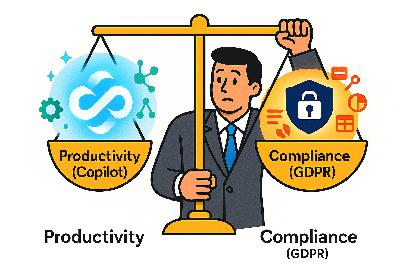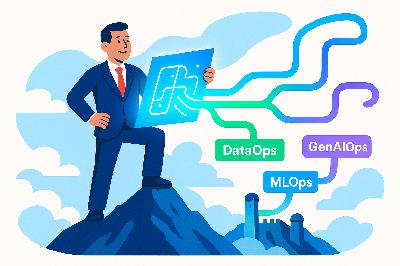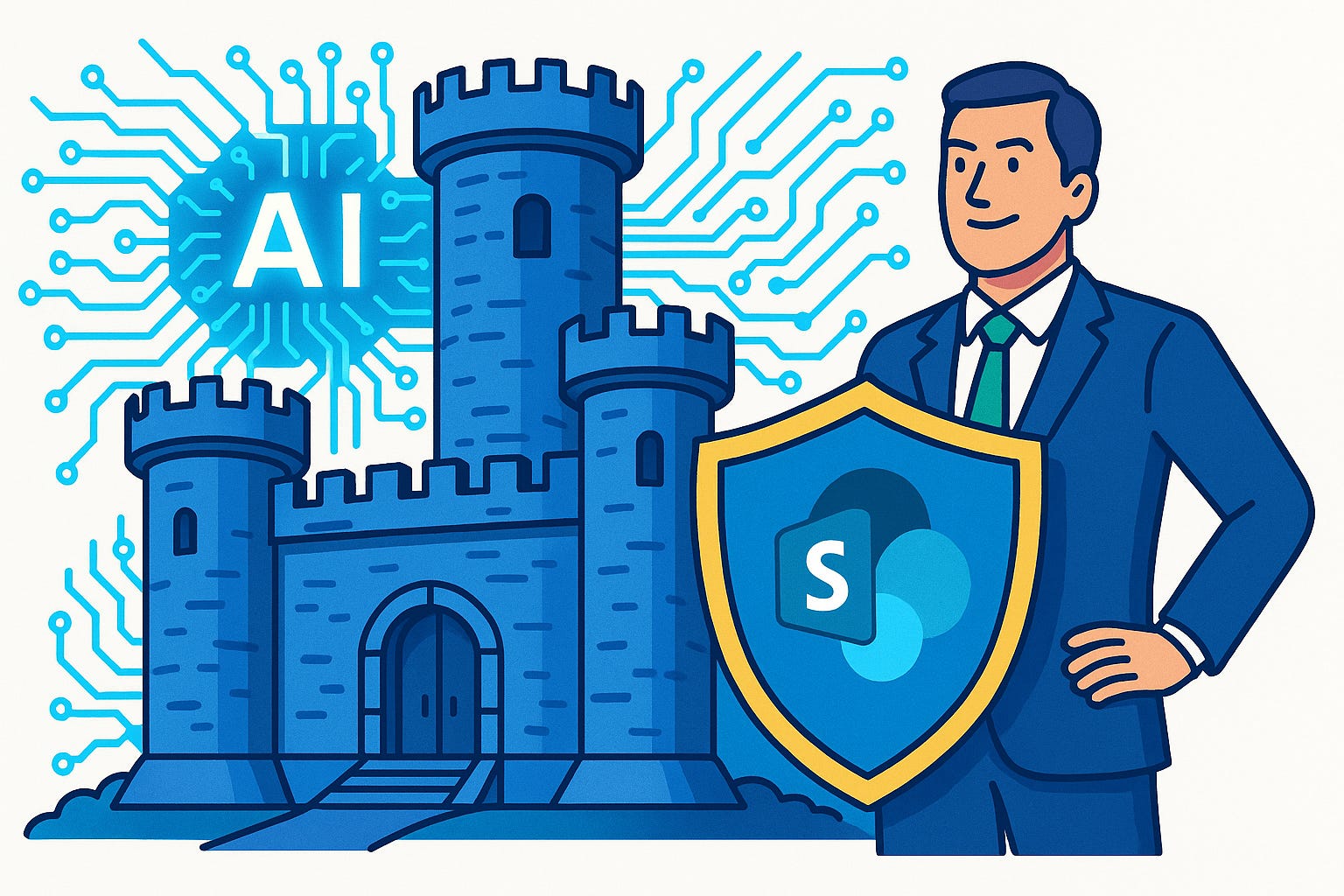The Power Platform Effect: Too Fast To Ignore
Description
What if I told you your developers aren’t drowning in code—they’re drowning in requests? Every department wants something automated yesterday, and the bottleneck is brutal. Now, imagine a world where your business doesn’t depend on a few overwhelmed coders but instead taps into hundreds of citizen developers, creating solutions right where the work happens.
That’s the rescue mission Power Platform was designed for—and the payoff is real, measured in millions unlocked and hours recaptured. Forrester’s research shows multi‑million benefits with rapid payback, and I’ll show you the mechanics: what to prioritize, how governance fits in, and how citizen builders multiply impact.
Because before you get there, you need to see what’s clogging the system in the first place.
The Hidden Bottleneck
Picture your top developers as starship engineers. You’d want them steering energy into the warp core, charting faster routes, powering the grand mission. Instead, many spend their days crawling through maintenance shafts, patching leaks with duct tape, and running constant repairs just to keep oxygen flowing. The brilliance you hired them for dims under endless firefights—because when organizations lean too heavily on a handful of expert coders, those coders become catch-all repair crews, expected to automate for thousands while juggling every new request.
Here’s how it plays out. Every department lights a signal flare—finance wants reports auto-compiled, operations wants routine checks scheduled, customer service wants emails triaged. All those requests funnel into one central bay: the coding team. The queue grows longer each week, and the strain builds. The irony is sharp—automation was meant to make things faster, but the process designed to deliver it slows everything down.
And it isn’t just delay that hurts. Picture the mood inside that waiting line. One team sits for three months hoping for an automation that erases thirty clicks a day. Another waits half a year for a workflow that helps process orders more smoothly. By the time the solutions arrive, business needs have shifted, forcing another round of revisions. Efficiency collapses into frustration. Leaders know the potential value is sitting in those queues; they can almost see it—but deadlines evaporate while teams sit stuck in backlog traffic.
Legacy strategies fuel this pattern. Centralized and tightly controlled, they operate on the belief that only professional developers can handle every detail. In theory, it safeguards quality. In practice, it ignores the wealth of expertise scattered across the workforce. Every role has people who know the quirks of their daily tasks better than IT ever could. Yet they remain sidelined, told automation isn’t part of their job description.
This sets up a paradox. Demand rises as more teams see what automation could save them. But each new request only lengthens the line. Push for speed, and the model gets slower. It’s like trying to accelerate a ship while loading on more cargo—the engine groans, not because it lacks power, but because the demand cycle drags it down. Industry research backs this up: many automation investments sit underutilized because of fragmented strategies and central bottlenecks that choke momentum before it starts.
The scale of wasted opportunity is enormous. Hours vanish into repetitive manual tasks that small automations could erase in minutes. Multiply that by hundreds of employees, carried across months, and you’re staring at the equivalent of millions in untapped value. The treasure is on board, but locked away. And the only people with a key—those overworked developers—are too busy triaging to unlock it.
For developers themselves, morale takes a heavy blow. They studied advanced systems, architecture, design—they wanted to lead innovation and shape the future. Instead they’re reduced to cranking out one-off fixes, tiny scripts, minor patches. They imagined charting voyages across galaxies but end up repainting the same escape pods over and over. Energy that should drive strategy drains away into repetitive chores.
And that’s the hidden bottleneck. A developer-only model looks neat on paper but in reality burns out talent and strangles progress. Requests never stop, the backlog never clears, and the cycle grows heavier with each quarter. What you meant to preserve as quality control ends up throttling speed, leaving the entire organization stuck.
But the harder truth is this: the bottleneck isn’t only about overwhelmed developers. The real cost lies in the majority of your workforce—people who understand their own problems best—yet are locked out of automation entirely.
The Everyone-Else Problem
Instead of your whole crew steering together, most organizations keep the majority standing idle, while only a select few are allowed to touch the controls. That’s the real shape of what I call the “everyone‑else problem.” Enterprises often limit automation to technical elites, shutting the wider workforce out of the process. Yet Forrester modeled extended automation affecting about 66% of staff by year three when a platform like Power Platform is scaled. That’s the contrast—most companies settle for a tiny fraction today, when research shows the reach could extend to a clear majority.
Think about what’s lost in the meantime. Across every floor of the business sit employees who notice the same patterns every day: pulling the same report, reformatting the same sets of data, moving files into folders. These aren’t glamor tasks; they’re low‑value loops that anchor people to their desks. The ideas for fixing them aren’t absent—every worker knows where the waste sits. But without accessible tools, the effort ends in shrugs and extra clicks that stretch into hours each month.
Now picture reversing that lockout. A finance analyst builds a simple flow that assembles weekly transaction reports automatically. A service rep sets up an easy rule for routing follow‑up requests rather than dragging them one by one. None of these are heroic builds. They’re tiny adjustments, “micro‑innovations” created by people who live closest to the work. Yet stacked across hundreds of staff, they unlock thousands of hours. In fact, Forrester’s TEI model included training roughly 1,800 automation builders—non‑technical employees equipped with guardrails and safe tools. That scale proves this shift is achievable, not hypothetical.
Time studies only highlight the absurdity further. When a legacy process is finally replaced with a small automation, whole blocks of time resurface—like a floor vaulting open with hours hidden underneath. And the irony is consistent: the value doesn’t come from reinventing the entire system at once, but from distributing the means of automation more widely. The potential was always there. It was just concentrated in the wrong hands.
The cost of this mismatch is massive. Picture a starship with hundreds of consoles, each designed for specialist crew members. Yet leadership insists that only the captain may steer. Officers stand idle, sensors unused, while the captain juggles every control at once. The ship still moves, but it lurches, slow and inefficient. That’s how enterprises hobble themselves—by misplacing trust and calling it safety.
The reality is that employees outside IT aren’t a liability. They’re frontline sensors, spotting recurring obstacles before anyone else. They feel which parts of their day erode morale, where automation could wipe away friction, and which actions repeat so often that the drain is almost invisible. But cut them off from automation, and that tacit knowledge never escapes. It stays locked inside individual workarounds, while central teams struggle under the noise of backlogged requests.
The solution doesn’t require radical invention. It requires frameworks that make self‑serve automation possible while preserving oversight. Give people intuitive, low‑code tools. Wrap them with governance. Then IT shifts from barricade to guide. The outcome is a workforce that eliminates its smallest pain points without waiting in line—forging new efficiencies safely on the fly. And in that model, central developers gain relief, no longer buried by the minutiae of every department’s workflow.
Ignore this, and the losses compound fast. Each routine click, each repetitive transfer, turns into real money. Extended across thousands of employees, the hidden cost measures in the millions. And yet the solutions aren’t locked in treasure chests far away—they sit right here, inside the daily grind of people who know their work best.
That’s the heart of the everyone‑else problem: exclusion doesn’t protect efficiency, it strangles it. The bottleneck persists, not because of unwilling workers, but because of withheld tools. This is not a people problem—it’s a tooling and governance problem. And until that’s acknowledged, your most skilled developers remain chained to the same treadmill, spending brilliance on tedium instead of charting the paths forward.
Developers as Assembly Line Workers
Why are highly trained engineers spending so much of their time coding like they’re stuck on an endless copy‑paste loop? It’s like recruiting a crew of rocket scientists and then asking them to fold paper airplanes all day. On the surface, they’re still producing useful work. But underneath, their skills are being funneled into an assembly line of minor builds—tasks important enough to keep the ship running, but far too small to justify the firepower being spent on them.
The picture is consistent. A developer with years of training in design, architecture, and system thinking gets pulled into yet another request: a notification set up here, an approval routed there, a formula to clean up data before export. Each one is functional, yes—b






















